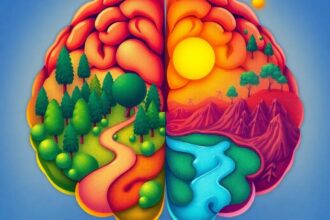Explore how neuroplasticity exercises can enhance cognitive function, memory, and mental resilience, with practical tips for daily life.
Discover the power of neuroplasticity exercises to boost brain health and cognitive function, with insights from the latest research.
Understanding Neuroplasticity
Neuroplasticity, often referred to as brain plasticity, is the brain’s remarkable ability to reorganize itself by forming new neural connections throughout life. This adaptability allows the brain to compensate for injury and disease, and to adjust its activities in response to new situations or changes in the environment. Neuroplasticity is the brain’s way of fine-tuning itself to meet the demands of our ever-changing lives,
says Dr. Michael Merzenich, a pioneer in the field of neuroplasticity research.
The Science Behind Neuroplasticity
Recent studies have shown that neuroplasticity is not just a phenomenon observed in the developing brain but continues throughout adulthood. According to a study published in Nature Neuroscience, adult brains retain a significant capacity for plasticity, which can be harnessed to improve cognitive function and recover from neurological damage.
This research underscores the potential of neuroplasticity exercises in enhancing brain health.
Neuroplasticity Exercises to Boost Brain Health
There are several exercises and activities that can promote neuroplasticity, including:
- Mindfulness Meditation: Practicing mindfulness meditation has been shown to increase gray matter density in the brain, particularly in areas associated with memory, learning, and emotional regulation. A study from Harvard Medical School found that
eight weeks of mindfulness meditation can lead to measurable changes in brain regions associated with memory, sense of self, empathy, and stress.
- Cognitive Training: Engaging in activities that challenge the brain, such as puzzles, learning a new language, or playing a musical instrument, can stimulate the formation of new neural connections.
Cognitive training exercises are like a workout for the brain, helping to keep it sharp and agile,
explains Dr. Sandra Bond Chapman, a cognitive neuroscientist. - Physical Exercise: Regular physical activity, particularly aerobic exercise, has been shown to promote neurogenesis (the creation of new neurons) and enhance synaptic plasticity.
Exercise is one of the most effective ways to boost brain health and enhance neuroplasticity,
says Dr. John Ratey, author of Spark: The Revolutionary New Science of Exercise and the Brain.
Neuroplasticity and Neurological Disorders
Neuroplasticity holds significant promise for the treatment of neurological disorders such as Alzheimer’s disease and stroke. Research published in The Lancet Neurology suggests that targeted neuroplasticity-based interventions can improve cognitive function and quality of life in patients with Alzheimer’s disease.
Similarly, stroke rehabilitation programs that incorporate neuroplasticity principles have been shown to enhance recovery and restore lost functions.
Practical Tips for Incorporating Neuroplasticity Exercises into Daily Life
To maintain long-term brain health, consider the following tips:
- Set aside time for mindfulness meditation: Even a few minutes a day can make a difference.
- Challenge your brain regularly: Engage in activities that require mental effort, such as learning a new skill or solving complex problems.
- Stay physically active: Aim for at least 30 minutes of moderate aerobic exercise most days of the week.
- Maintain a healthy diet: A diet rich in antioxidants, omega-3 fatty acids, and other brain-boosting nutrients can support neuroplasticity.
- Get adequate sleep: Sleep is essential for brain health and the consolidation of new learning.
Conclusion
Neuroplasticity offers a powerful framework for understanding and enhancing brain health. By incorporating neuroplasticity exercises into your daily routine, you can improve cognitive function, memory, and mental resilience, and potentially reduce the risk of neurological disorders. As Dr. Merzenich aptly puts it, The brain is not a static organ; it is a dynamic, ever-changing system that can be shaped and improved throughout life.




